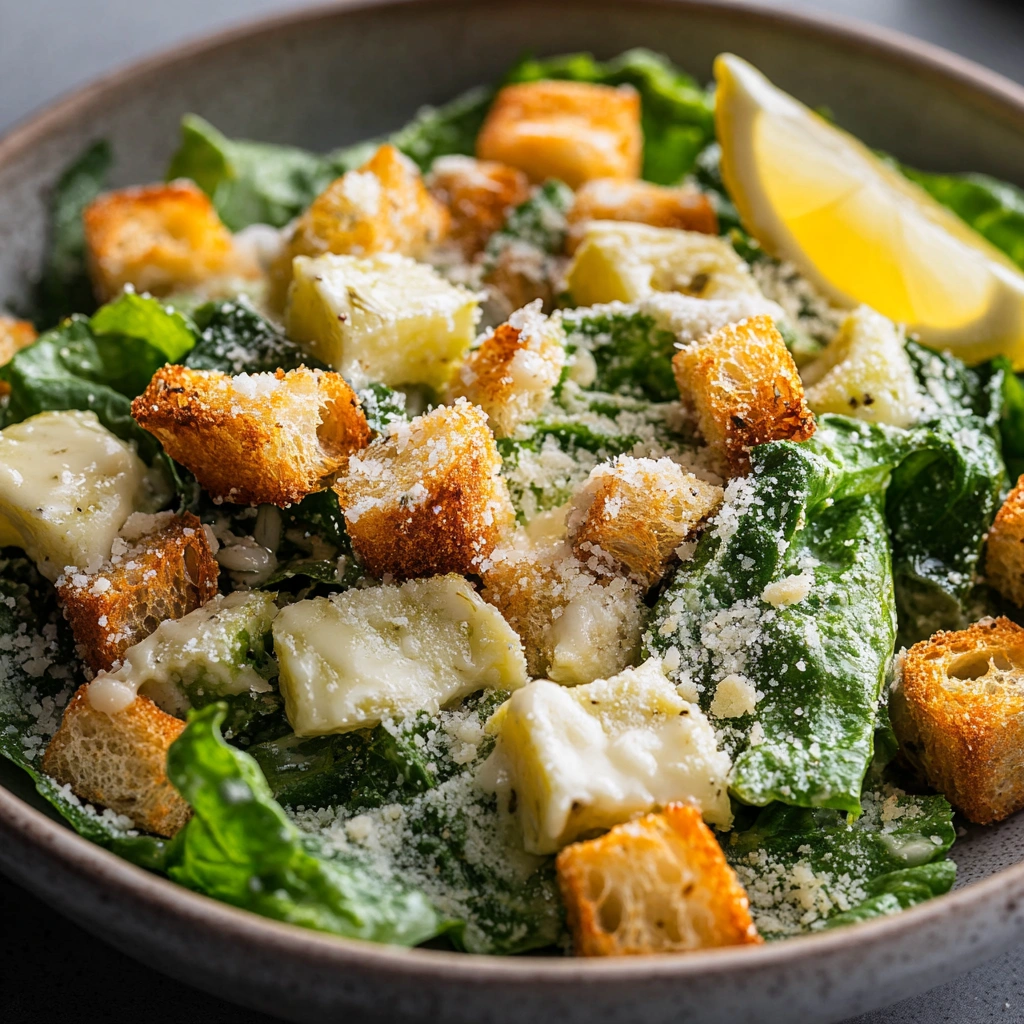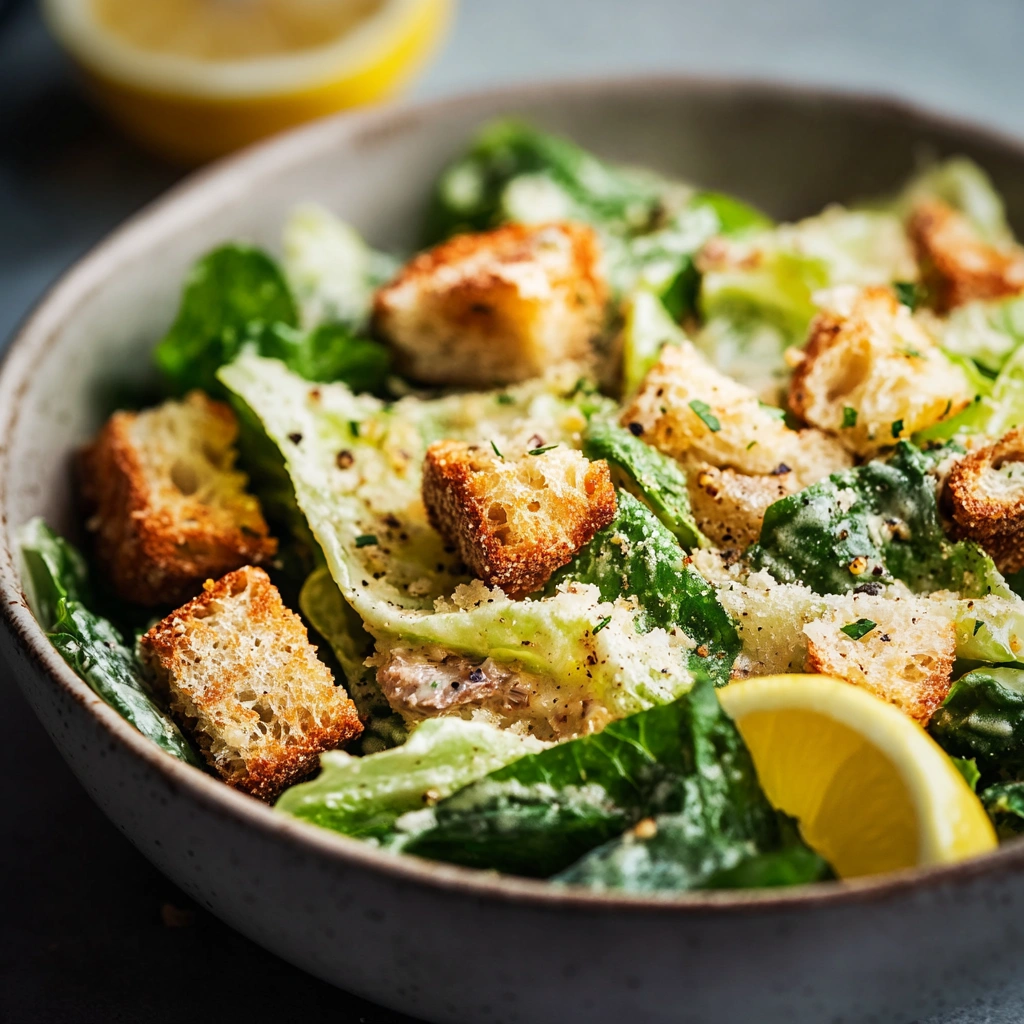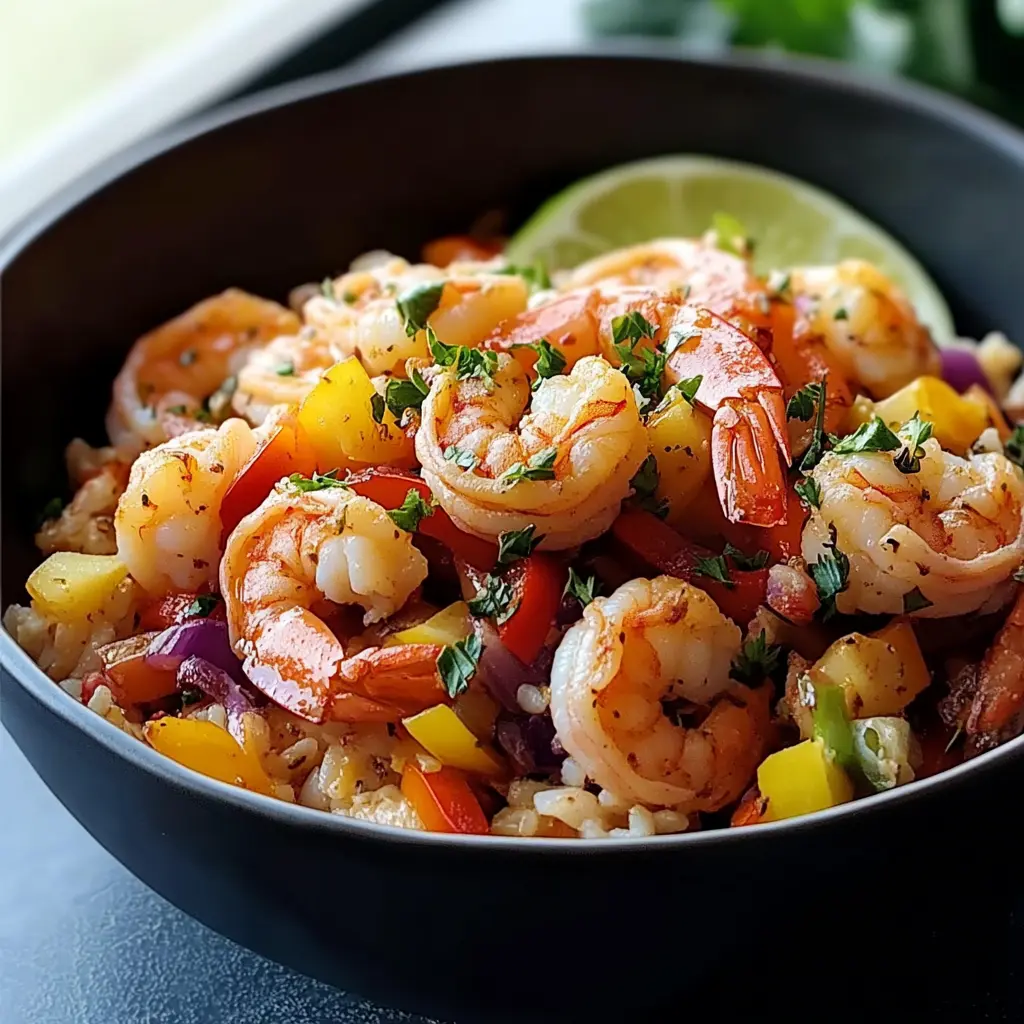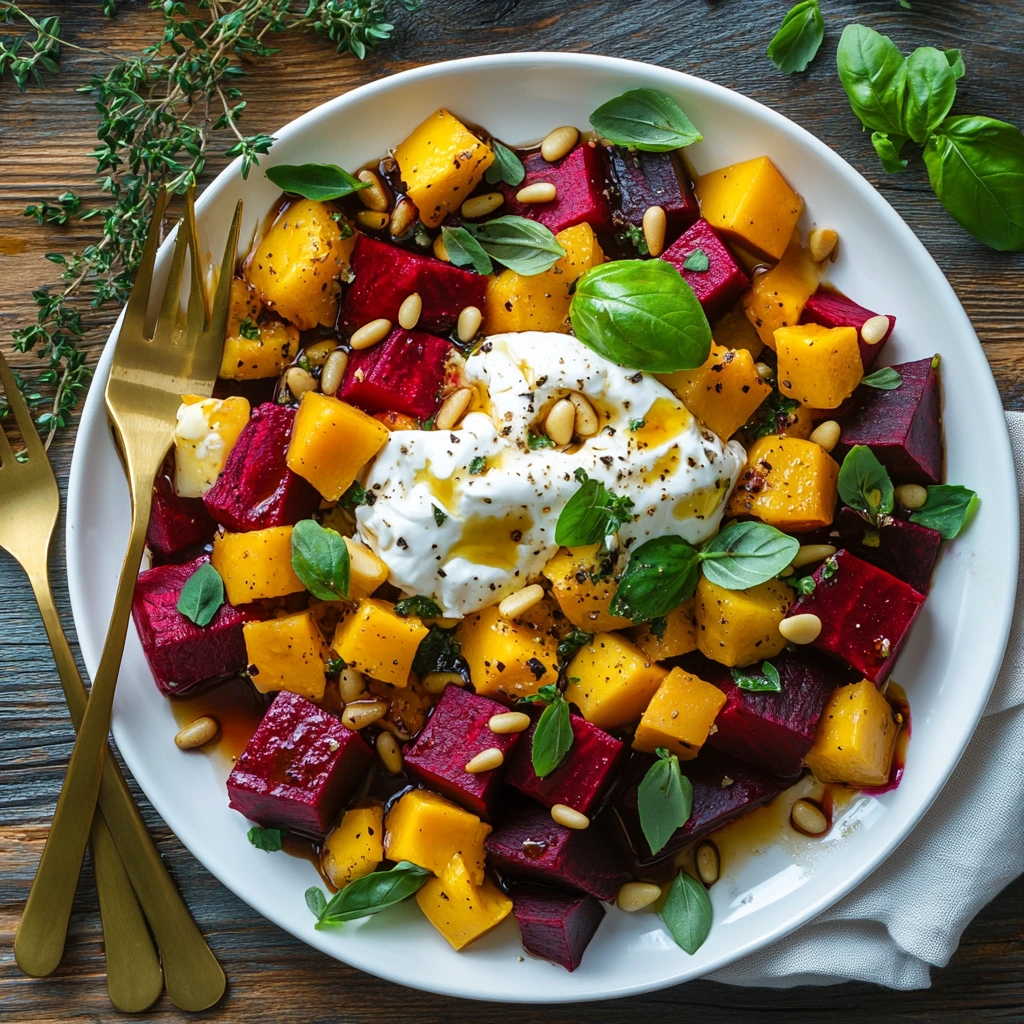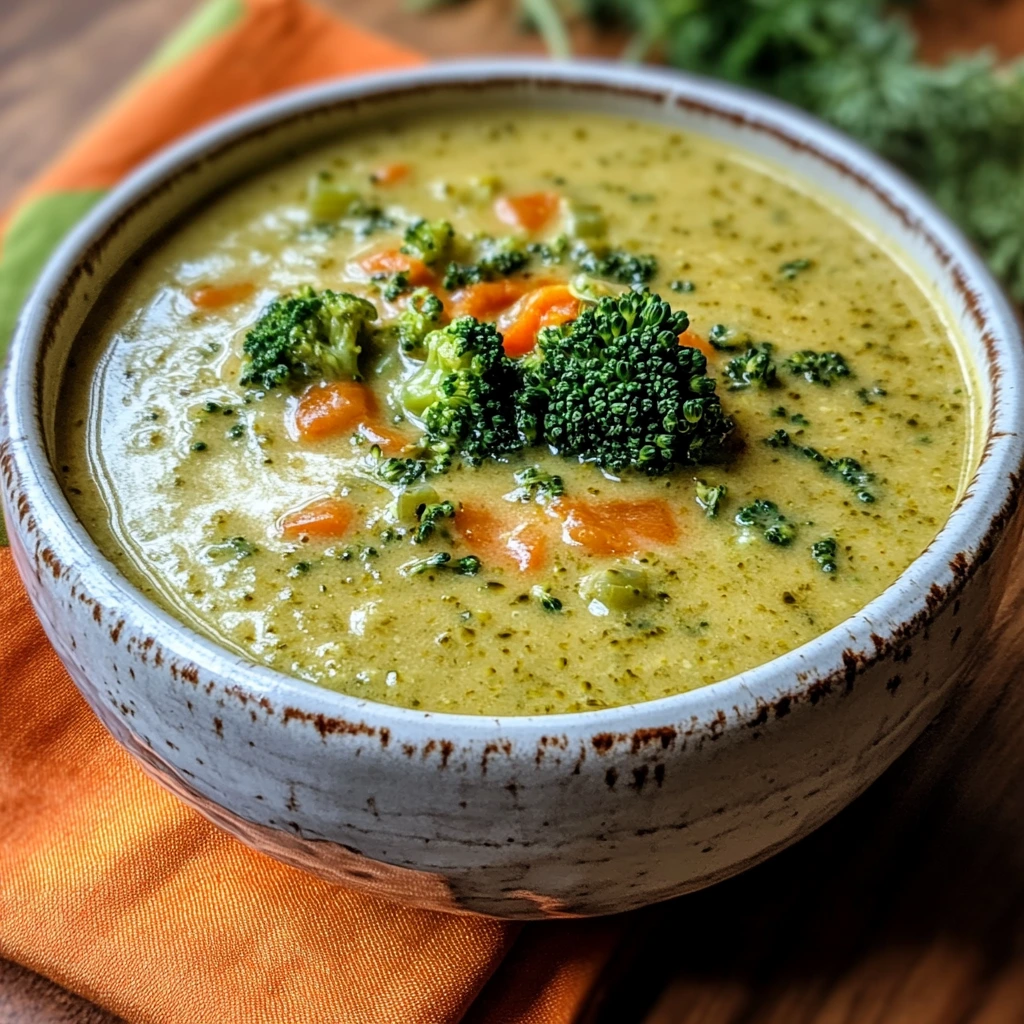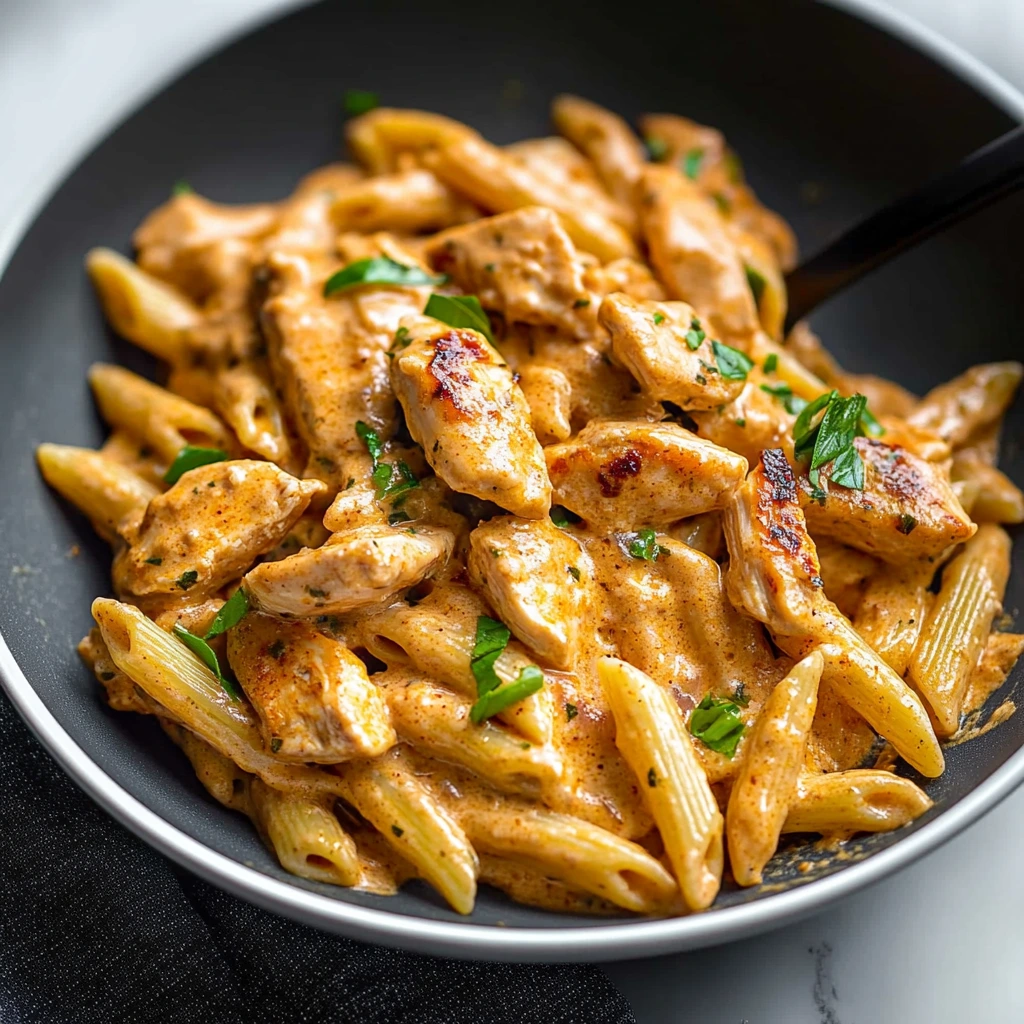Few dishes evoke timeless elegance and culinary mastery like the Classic Caesar Salad. Originating nearly a century ago, this iconic salad combines crisp romaine lettuce, tangy dressing, crunchy croutons, and salty cheese to create a perfectly balanced dish. Whether served as a light lunch, a side to grilled meats, or a stand-alone vegetarian main, its versatility makes it a staple on restaurant menus and home tables worldwide. In this article, you will discover the fascinating backstory behind its creation, learn about each traditional ingredient’s unique contribution, and follow a clear, step-by-step recipe to recreate the original preparation. Along the way, you’ll pick up professional tips for elevating texture and flavor, understand nutritional highlights, and explore common pitfalls to avoid. By the end, you’ll be perfectly equipped to prepare a restaurant-quality Caesar salad at home—honoring the original formula while adding your personal flair.
History and Origins
The Caesar salad’s origins trace back to July 4, 1924, in Tijuana, Mexico, where Italian-American restaurateur Caesar Cardini presided over a bustling kitchen during a busy holiday weekend. According to family lore, a last-minute rush depleted many staples in his modest kitchen. Faced with scant provisions but eager to satisfy diners, Cardini improvised using romaine lettuce, garlic, raw eggs, olive oil, Parmesan, and Worcestershire sauce—ingredients he had on hand. To heighten the sensory experience, he theatrically tossed the components tableside, drizzling oil and lemon juice in a showman’s flourish. This impromptu creation captivated guests with its bright flavors and theatrical presentation, rapidly earning legendary status among Hollywood elites who frequented the border locale.
As word spread north into the United States, the salad’s fame soared. Early ambassadors included aviator Charles Lindbergh and actress Marlene Dietrich, who admired its novelty and simplicity. By the 1930s, high-end restaurants in Los Angeles and New York had adopted their own interpretations, often embellishing the recipe with anchovies and elaborate garnishes. Despite regional tweaks—some chefs added mayonnaise for ease of assembly, while others experimented with different greens—Cardini’s original tableau of crisp romaine, creamy emulsion, and savory accents remained the gold standard. Today, the Classic Caesar Salad endures as a tribute to resourcefulness and showmanship, proving that the simplest combinations can yield unforgettable culinary experiences.
Traditional Ingredients and Their Roles
-
Romaine Lettuce
The backbone of any Caesar salad, romaine lettuce brings a crisp, sturdy texture that withstands the weight of the dressing without wilting. Each leaf’s firm ribs offer a satisfying crunch, while the mild, slightly bitter flavor provides a clean contrast to richer elements. Chilling the lettuce ahead of assembly further enhances its snap and ensures the salad stays crisp until the last bite. -
Croutons
Croutons deliver essential textural contrast. Made from day-old bread—ideally a rustic baguette or sourdough—cubes are tossed in olive oil, garlic, and a pinch of salt, then toasted until golden. This process creates a crunchy exterior and slightly chewy interior, reinforcing the salad’s structural integrity. Homemade croutons imbue the dish with fresh-baked aroma and allow you to control seasoning intensity. -
Caesar Dressing
The dressing, an emulsified blend of raw egg yolks, extra-virgin olive oil, fresh garlic, Dijon mustard, Worcestershire sauce, lemon juice, and anchovy fillets, is the salad’s soul. Egg yolks act as natural emulsifiers, binding oil and water-based components into a creamy liaison. Garlic and anchovies contribute pungent umami depth, while lemon juice and Dijon mustard add brightness and tang. The ratio of oil to egg determines viscosity: too little oil yields a thin dressing, while too much risks separation. Achieving a silky emulsion requires slow oil incorporation—dripped in while whisking vigorously or slowly streamed in if using a blender. -
Parmigiano-Reggiano
A generous shaving or grating of authentic Parmigiano-Reggiano introduces nutty, savory notes that underscore the dressing’s richness. Its granular texture melts slightly upon contact, harmonizing the ensemble. -
Anchovies
While optional in Cardini’s original, many purists insist on anchovies for their concentrated brine. Muddling fillets into the dressing imparts subtle saltiness and umami complexity without overt fishiness. -
Lemon & Olive Oil
Freshly squeezed lemon juice brightens the dressing, cutting through fat with acidity. High-quality extra-virgin olive oil provides fruity, peppery undertones that complement the cheese and anchovies, rounding out the flavor profile.
Step-by-Step Classic Recipe
-
Prepare the Lettuce
-
Wash 2–3 heads of romaine thoroughly in cold water to remove grit.
-
Spin or pat dry until crisp.
-
Tear leaves into large bite-sized pieces, avoiding bruising the ribs.
-
Chill in the refrigerator while completing other steps.
-
-
Make the Dressing
-
In a medium bowl, whisk 2 large egg yolks until pale.
-
Add 1 teaspoon Dijon mustard, 1 minced garlic clove (rubbed into the bowl to release oils), and 1 teaspoon Worcestershire sauce.
-
Mash in 2–3 anchovy fillets with the back of a spoon until nearly dissolved.
-
Slowly pour in ½ cup extra-virgin olive oil in a thin stream, whisking vigorously to emulsify.
-
Finish with 2 tablespoons fresh lemon juice, season with salt and freshly ground black pepper to taste, then whisk again for a glossy finish.
-
-
Toast Homemade Croutons
-
Cube 4–5 slices of day-old baguette into 1-inch pieces.
-
Toss with 2 tablespoons olive oil, 1 crushed garlic clove, and a pinch of salt.
-
Spread on a baking sheet and bake at 375°F (190°C) for 8–10 minutes, turning once, until golden and crisp.
-
Cool before adding to salad.
-
-
Assemble the Salad
-
In a large bowl, toss chilled lettuce with just enough dressing to coat each leaf (reserve extra on the side).
-
Add ½ cup croutons and gently combine.
-
Using a vegetable peeler, shave or grate ¼ cup Parmigiano-Reggiano over the top.
-
Finish with a crack of black pepper.
-
If desired, serve tableside and drizzle additional dressing for flair.
-
-
Optional Protein Add-Ins
-
For a heartier meal, top with grilled chicken breast strips or shrimp sautéed in garlic and olive oil.
-
Ensure proteins are seasoned simply (salt, pepper, lemon) so as not to overpower the classic flavors.
-
-
Final Garnish & Serving
-
Garnish with a light sprinkle of chopped parsley for color.
-
Serve immediately on chilled plates or shallow bowls to keep ingredients crisp and the dressing emulsified.
-
Tips for Perfecting Your Caesar
-
Balance Your Emulsion
The hallmark of a flawless Caesar dressing is a silky, stable emulsion. Whisk egg yolks, mustard, and acids thoroughly before adding oil in an ultra-thin stream. If separation occurs, rescue the sauce by whisking in a teaspoon of warm water or an extra egg yolk to rebind fat and liquid. -
Mind Your Acid-to-Fat Ratio
Too much oil yields a cloying dressing; too much lemon can taste overly sharp. Aim for roughly three parts oil to one part acid (lemon juice and Worcestershire). Taste as you go, adjusting in small increments—this ensures the dressing maintains brightness without overpowering the lettuce. -
Season in Layers
Season the components individually: a pinch of salt in the egg yolks, a light grind of pepper over the lettuce, and a dash of salt on croutons. Layered seasoning prevents a flat-tasting salad and allows you to control salt levels, particularly important when using salty Parmigiano-Reggiano or anchovies. -
Use High-Quality Ingredients
Invest in authentic Parmigiano-Reggiano, extra-virgin olive oil, and fresh garlic. Inferior oils can introduce off-flavors, while pre-grated cheeses often contain anti-caking agents that affect melt and texture. Fresh ingredients pay dividends in both flavor and mouthfeel. -
Serve Immediately
Assemble the salad just before serving to preserve crouton crunch and lettuce crispness. If you must pre-dress, toss lettuce and dressing in a chilled bowl and keep croutons separate until plating. This simple step prevents sogginess and maintains contrast. -
Customize Thoughtfully
While purists prize the original formula, subtle tweaks—such as adding a hint of mustard powder or swapping manchego for Parmesan—can refresh the classic. Introduce variations sparingly to complement rather than mask the signature profile.
Nutritional Breakdown
A Classic Caesar Salad, when prepared according to traditional proportions, strikes a balance between indulgence and nutrition. Below is an approximate analysis per one generous serving (about 350 g):
-
Calories (Approx. 450 kcal): Most calories derive from olive oil (450 kcal per 100 g) and egg yolks (55 kcal each). The dairy component (Parmigiano-Reggiano) contributes additional fat and protein.
-
Macronutrients:
-
Fat (36 g): Predominantly monounsaturated from olive oil, with saturated fat from cheese and egg yolk.
-
Protein (16 g): Supplied by egg yolk, cheese, and anchovies. Adequate for a light meal or appetizer.
-
Carbohydrates (16 g): Mostly from croutons; fiber content is modest (about 2 g) unless whole-grain bread is used.
-
-
Micronutrients:
-
Calcium (250 mg): From Parmigiano-Reggiano, supporting bone health.
-
Vitamin A (450 IU): Provided by egg yolk and romaine, benefiting vision and immune function.
-
Vitamin K (55 µg): High in romaine lettuce, important for blood clotting and bone metabolism.
-
Iron (1.5 mg): From anchovies and leafy greens, contributing to oxygen transport.
-
-
Sodium (Approx. 900 mg): Anchovies, cheese, and Worcestershire sauce elevate sodium. To reduce sodium, rinse anchovy fillets briefly or substitute low-sodium Worcestershire.
-
Health Considerations:
-
The salad offers beneficial monounsaturated fats and protein, making it more satiating than green salads dressed with vinegar alone.
-
Those monitoring cholesterol or sodium should moderate portion size or adjust ingredients (e.g., using two yolks instead of three, or swapping half the cheese for a lower-sodium alternative).
-

Serving and Presentation Ideas
-
Shallow Bowls and Leaf Display
Present your Caesar in wide, shallow bowls to showcase individual romaine leaves. Gently layer whole leaves on the plate, drizzle dressing sparingly, then tuck croutons and cheese shavings between the ribs. This technique accentuates texture and color contrast. -
Tableside Finishing
For a restaurant-style flourish, assemble most of the salad in the kitchen, then bring the bowl to the table. Whisk extra dressing in view of guests and toss the salad in a crisp white linen–lined basket or platter to elevate the experience. -
Protein Plating
If adding grilled chicken or shrimp, slice proteins thinly and fan them across one side of the salad. This organized layout invites diners to combine bites as they choose and keeps proteins from wilting beneath dressing. -
Color and Herb Garnishes
A light sprinkle of chopped chives or flat-leaf parsley adds a fresh green accent. Alternately, edible flowers such as nasturtiums can lend vivid color and delicate peppery notes. -
Pairing Suggestions
-
Wine: A crisp Sauvignon Blanc or unoaked Chardonnay complements the salad’s acidity.
-
Sides: Serve alongside grilled vegetables or crusty bread for a balanced meal.
-
Cocktails: A dry gin martini or classic Negroni echoes the salad’s herbal and citrus undertones.
-
Common Mistakes and How to Avoid Them
-
Over-dressing the Lettuce
Mistake: Saturating leaves until they droop.
Solution: Start with half the dressing, toss gently, then add more in spoonsful until each leaf has a light sheen. -
Soggy Croutons
Mistake: Mixing croutons too early or under-toasted cubes softening quickly.
Solution: Toast until golden brown and add croutons just before serving. Store any extra separately. -
Broken Emulsion
Mistake: Pouring oil too quickly into the yolk mixture.
Solution: Drizzle oil in a slow, steady stream while whisking vigorously; if it splits, whisk in a teaspoon of warm water or a fresh yolk to rebind. -
Bitter or Wilting Lettuce
Mistake: Using warm or bruised romaine, resulting in limp leaves.
Solution: Chill leaves after washing and handle by the ribs to minimize bruising. Dry thoroughly to help dressing adhere. -
Excessive Saltiness
Mistake: Failing to account for salt in anchovies, cheese, and Worcestershire sauce.
Solution: Taste the dressing before adding extra salt; adjust anchovy quantity or rinse fillets if necessary.
FAQs
-
What distinguishes a Caesar salad from other green salads?
A true Caesar combines a creamy, emulsified dressing made with egg yolk and anchovies, crisp romaine, homemade croutons, and Parmigiano-Reggiano. The tableside tossing and theatrical presentation also set it apart. -
Is it safe to use raw egg yolks in the dressing?
To reduce risk, use pasteurized eggs. Alternatively, substitute one yolk with two tablespoons of mayonnaise or Greek yogurt, which preserves creaminess without compromising food safety. -
Can I substitute kale or spinach for romaine?
While kale adds nutrition and robustness, its tougher leaves require massaging with oil and acid to soften. Spinach tends to wilt rapidly under dressing, so use sparingly or mix with romaine for structure. -
How long does homemade Caesar dressing last?
Stored airtight in the refrigerator, undiluted dressing keeps for up to three days. Beyond that, separation and off-flavors may develop. Always whisk before reuse. -
Are there vegan Caesar alternatives?
Yes. Replace egg yolk with aquafaba or silken tofu, swap anchovies for capers or seaweed flakes, and use nutritional yeast instead of cheese for umami depth. -
What are some popular Caesar salad variations?
Common twists include adding grilled shrimp or chicken, swapping kale for romaine, incorporating roasted chickpeas for crunch, or infusing the dressing with chipotle or wasabi for a fusion flair.
Conclusion
The Classic Caesar Salad remains a testament to simplicity elevated through technique and quality ingredients. From its serendipitous birth at Caesar Cardini’s Tijuana eatery to its status as a perennial favorite on global menus, this salad exemplifies how limited components—romaine, oil, egg, cheese, garlic, and anchovy—can unite in harmonious complexity. Mastering its emulsion teaches foundational culinary skills, while attention to ingredient sourcing highlights the value of freshness and provenance.
Armed with professional tips for balancing acid and fat, maintaining crisp textures, and avoiding common pitfalls, you can now confidently recreate the original recipe or introduce subtle customizations. Nutritionally, the Caesar offers a satisfying mix of healthy fats, protein, and essential micronutrients, making it both indulgent and nourishing. Thoughtful plating and tableside finishing can transform a routine meal into a memorable dining experience, whether hosting guests or elevating a weeknight dinner.
Ultimately, the enduring appeal of the Caesar lies in its adaptability. While reverence for Cardini’s formula is well-justified, modern variations—from vegan renditions to global fusion interpretations—demonstrate the salad’s capacity for reinvention. We invite you to celebrate tradition and experiment boldly: craft your own signature Caesar, share it with friends, and continue the legacy of one of the world’s most beloved salads. Enjoy the process, and buon appetito!
Print
Classic Caesar Salad
Description
This Classic Caesar Salad recipe captures the timeless elegance and bold flavors of the original 1924 creation by Caesar Cardini. Crisp, chilled romaine leaves are coated in a silky, homemade dressing made from egg yolks, extra-virgin olive oil, fresh garlic, anchovies, Dijon mustard and lemon juice. Homemade garlic croutons provide the perfect crunch, while generous shavings of Parmigiano-Reggiano lend nutty richness. Serve it tableside for an authentic touch or toss it quickly in a chilled bowl for dinner at home. Whether enjoyed as a light lunch, a side to grilled meats, or a standalone vegetarian entrée, this Caesar Salad delivers restaurant-quality results with simple, high-quality ingredients.
Ingredients
- ⅓ cup Creamy Caesar dressing
- ½ lemon
- 2 heads romaine lettuce
- ⅓ cup shaved Parmesan cheese
- ½ cup croutons purchased or homemade
- chopped cooked chicken or crispy breaded chicken chunks
Instructions
- Measure the Caesar dressing into the bottom of a mixing bowl. Squeeze the lemon into the dressing and whisk until thoroughly combined.
- Tear the lettuce into bite sized pieces over the dressing in the mixing bowl. Add in the croutons and shaved Parmesan and use tongs to toss until everything is evenly coated in dressing.
- Serve immediately as is or top with chicken.
Notes
- Egg Safety: For raw-egg dressings, use pasteurized eggs to minimize risk. Alternatively, substitute one yolk with two tablespoons of mayonnaise or Greek yogurt for similar creaminess.
- Anchovy Intensity: If you prefer a milder anchovy flavor, rinse the fillets before mashing them into the dressing, or start with one fillet and adjust to taste.
- Make-Ahead Tips: Prepare the dressing and croutons up to one day in advance. Store dressing in an airtight container in the fridge and keep croutons at room temperature in a sealed bag.
- Lettuce Prep: Wash and spin-dry romaine, then chill the leaves for at least 30 minutes before assembling to ensure maximum crunch.
- Oil Temperature: If the dressing breaks, whisk in a teaspoon of warm water or an extra yolk to re-emulsify.
- Variations: Add grilled chicken strips, sautéed shrimp, or roasted chickpeas for extra protein and texture. For a vegan version, replace egg with aquafaba and cheese with nutritional yeast.
- Storage: Once dressed, the salad is best eaten immediately. Leftovers will wilt and soften; store any uneaten components separately and toss just before serving.


